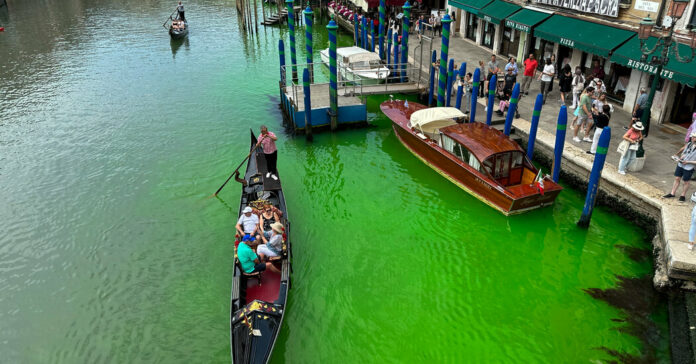For days, Venetians have wondered what caused a swath of their city’s famous Grand Canal to turn bright green.
On Monday, the authorities had an answer: Test samples of the water confirmed that the canal’s bright new hue was caused by fluorescein, a chemical often used find leaks during underwater construction. Now, Italian officials are investigating how the chemical got into the canal.
The regional environmental agency for the state of Veneto, which includes Venice confirmed the presence of fluorescein in the canal near the Rialto Bridge and said a complete analysis of the water samples would be completed in the next few days.
Still, officials do not know who or what was behind the color.
Luca Zaia, the president of the Veneto region, said on Facebook on Monday that the possibility of copycats was “worrying.”
“Venice, like other iconic places in the Veneto region, has such visibility that actions like this” could attract “‘characters’ in search of publicity,” Mr. Zaia wrote.
It was unclear whether the police had identified a suspect or whether anyone might face charges. The Venice police did not immediately respond to a request for comment on Tuesday.
Mr. Zaia said that “adequate and strong responses are needed.”
“We must protect the city, its monuments, everyone’s right to enjoy its historical treasures free of the marks left by rowdy individuals,” he said.
Fluorescein can have low levels of toxicity; however, it is routinely used in some medical eye exams, according to the U.S. National Library of Medicine. The environmental authorities in Veneto said on Monday that tests had not indicated any levels of toxicity in the canal.
Even before tests confirmed fluorescein was in the water, officials believed the chemical was causing the abnormal hue based on similar episodes in the past, the environmental agency said in a statement on Sunday.
In 1968, the Argentine artist Nicolás García Uriburu turned the Grand Canal green using fluorescein “to bring attention to the relationship between nature and civilization and to promote ecological consciousness as a critical part of culture,” according to the Metropolitan Museum of Art in New York.
The color faded after about a day, according to the museum. This week, Veneto’s environmental agency said that depending on how much fluorescein was in the water, it could take a few more days for the canal to return to its normal color as the chemical dissolves.
Elisabetta Povoledo and Ilaria Parogni contributed reporting.


